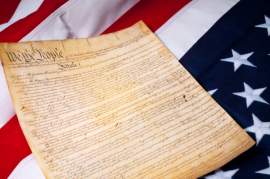
Understanding Habeas Corpus

Popular In Constitution
Purpose Of Lifetime Appointment And Pros And Cons Enumerated Powers Bicameral Legislature Background Article 3 Of The Constitution We The People 1st Amendment Who Wrote The Constitution Judicial Review Equal Protection Clause Three Fifths Compromise 10th Amendment 5th Amendment
Article I of the Constitution provides the right to habeas corpus, through which a person may issue a writ against his or her unlawful detention by a governmental or judicial system to citizens of the United States. The right to habeas corpus is a traditional concept in English common law, the origin of the American legal system, and was thus carried over from the process of winning independence from England.
Habeas corpus is considered a cornerstone of the English-derived conception of a liberal, democratic society, protecting people against arbitrary arrests and seizures, and thus guaranteeing the legitimacy of the judicial system as it is implemented. The Government has acted, however, to suspend the right to habeas corpus under certain conditions, and in these cases the Supreme Court has been faced with the question of whether to affirm or oppose the executive branch's decision.
The United States Government has sometimes suspended the right to habeas corpus in certain regions or in regard to certain categories of people, as has sometimes been deemed necessary in regard to internal security threats, variously referred to as rebellion, sabotage, or terrorism. Notable early instances of this occurrence can be found in the Civil War, when President Lincoln suspended the right in areas feared to be susceptible to Confederate loyalties, and the subsequent Reconstruction when President Grant did the same for areas threatened by Ku Klux Klan terrorist activity.
The Supreme Court approved similar practices in the 20th Century. The attack on Pearl Harbor and subsequent war with Japan aroused doubts as to the loyalty of Japanese-descended American citizens and the threat of enemy saboteurs. The Supreme Court's decision in the 1942 case, "Ex parte Quirin," allowed for the right to habeas corpus to be denied to such saboteurs, ruling them "unlawful combatants". The Court's 1946 decision in Duncan v. Kahanamoku held the martial order declared after the Pearl Harbor decisions permissible due to circumstances.
In more recent history, the executive and legislative branches have attempted to impose limitations on the right to habeas corpus as a measure against terrorism, as was seen early on in the Antiterrorism and Effective Death Penalty Act of 1996 after the Oklahoma City building bombing, and later appeared in the Bush Administration's responses to the September 11, 2001 attacks. In making decisions on these latter moves (the former having been less actively applied), the Supreme Court has tended to find against the Government's moves against the right to habeas corpus.
The 2004 case of Hamdi v. Rumsfeld and 2006 case of Hamdan v. Rumsfeld, for instance, found that, even when being tried for terrorist/insurgent activities, American citizens could still expect to hold the right to file for writs of habeas corpus. The Court has also strengthened the right to habeas corpus through other decisions. The post-World War II era saw a trend in Supreme Court decisions that extended the applicability of the right, which today is commonly used for challenges to death penalty laws.
NEXT: What Is Wiretapping





















